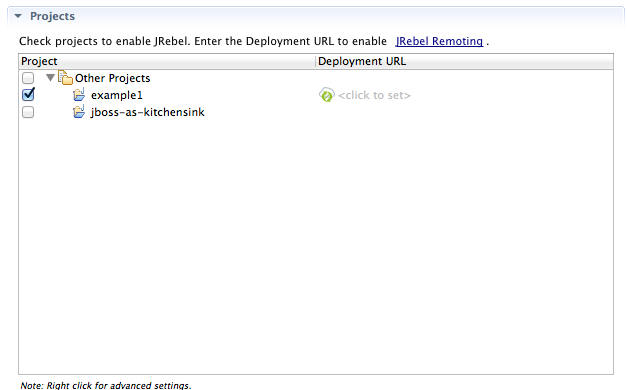


Also had to use the fabulous Maven Copy Plugin because the xslt transformation occurred after the final war packaging and I had to add the resulting rebel.xml to that WAR.
#JREBEL ECLIPSE CONFIGURATION GENERATOR#
I used the XSLT Generator Maven Plugin to help me merge the various rebel.xml files. This is becoming another issue a bit different of the original question :) Maybe I should through another question. So these kind of properties will not be enough to guarantee that the absolute paths generated on each developer machine in the rebel.xml are correct.įor now, I'm trying to tackle using some kind of maven plugin to do the rebel.xml merge. I'm using maven properties but we've have two different maven multi-module hierarchy that don't know about each other and I can't use a root pom to connect them. But this is worthless for my team development environments. I can get it work if I create a custom rebel.xml for the main webapp that points to all the absolute directories containing the source files (static files such as JSP, HTML, JS, CSS, images, etc.) of the depending web apps. The rebel.xml for the jars modules are at the right places (inside the jar file). Because the rebel.xml it's generated dynamically via jrebel maven plugin when the main webapp build occurs, only the it's jrebel.xml prevail. I have a main web app module that depends on several webapps modules.
#JREBEL ECLIPSE CONFIGURATION CODE#
Current Limitations Since the server does not restart, modifications to startup listeners and code that connects front-end and back-end components, such as adding a new LitTemplate class.
Kind of.I'm still struggling with the war modules overlaying. When using the Jetty Maven plugin together with JRebel, ensure that automatic restart is disabled (omit or setWhat is a funcional development environment involving maven eclipse and a external tomcat?.It's possible to over come that eclipse WTP issue?.
Currently, the Tomcat instance is controlled via service (tomcat monitor) and the deployed web apps are configured with a XML located at $/target/app will do the trick). I'm having a hard time getting JRebel to work in my current development environment.


 0 kommentar(er)
0 kommentar(er)
